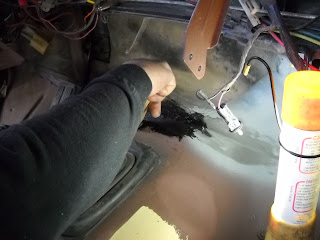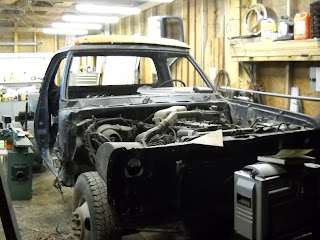1991 Dodge Ram D350 Cummins Customization - Part 3
Splashpan Painting
This was the first application of the Nason John Deere Green paint - 4 parts paint, 2 parts reducer, and 1 part activator. I apologize for the shirt I am wearing.
Alot of the time between my last post and this one has been on cleaning and painting the engine, which has made a world of difference. This picture shows the rough condition that the firewall and heater hoses were in, rough meaning dirty.
Here is the Heater/AC box and blower motor prior to removal.
Here is after, that paint is simply beautiful.
Empty Heater/AC Box
Heater/AC box with new evaporator core and heater core installed.
Heater/AC box installed
Heater/AC box from the inside.
Driver-side of the firewall before primer and paint.
Same area after priming, this has all been painted green since, just did not have a picture of it.
John Deere Green ceiling.
Underside of hood.
The hood has had countless hours spent on it and we are still working on getting it just right since it is a very visible show surface.
This was after the first application of paint, which has since been sanded mostly off and had further body work done to eliminate low spots and orange peel.
My cheerleader Badger. No he was not eating the snow salt...
Here is a shot of the truck with the splashpan removed. The fan was removed as well and painted black, while the block and many of the accessories were painted gray.
After painting and reassembly of the fan, splashpan, and radiator. Looks very sharp.
With the AC Condensor added.
Inner fenders after being painted black. We have reapplied undercoating on the insides of them to improve noise reduction.
Our main focus going forward is to finish prepping the rest of the exterior of the cab and get a first coat of paint on it.





































